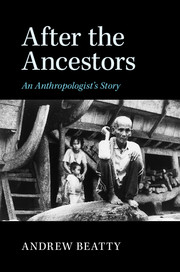Book contents
- Frontmatter
- Epigraph
- Contents
- List of illustrations
- Preface
- People
- Map
- Prologue
- 1 The statue
- 2 House key
- 3 Among women
- 4 Blood brothers
- 5 Daggers and debutants
- 6 Stormy Sunday
- 7 Three things that matter
- 8 The making of great men
- 9 A game of chess
- 10 Cholera song
- 11 Progress
- 12 Brothers and strangers
- 13 Exile and return
- 14 Field work
- 15 The chicken's neck
- 16 Good deaths and bad deaths
- 17 First family
- 18 Blessing
- 19 Half an egg
- 20 Waiting
- 21 Death of a chief
- 22 Ama Jonah at bay
- 23 Unravelling
- 24 The ethnographer and his double
- Epilogue
- Index
3 - Among women
Published online by Cambridge University Press: 05 March 2015
- Frontmatter
- Epigraph
- Contents
- List of illustrations
- Preface
- People
- Map
- Prologue
- 1 The statue
- 2 House key
- 3 Among women
- 4 Blood brothers
- 5 Daggers and debutants
- 6 Stormy Sunday
- 7 Three things that matter
- 8 The making of great men
- 9 A game of chess
- 10 Cholera song
- 11 Progress
- 12 Brothers and strangers
- 13 Exile and return
- 14 Field work
- 15 The chicken's neck
- 16 Good deaths and bad deaths
- 17 First family
- 18 Blessing
- 19 Half an egg
- 20 Waiting
- 21 Death of a chief
- 22 Ama Jonah at bay
- 23 Unravelling
- 24 The ethnographer and his double
- Epilogue
- Index
Summary
At the time of our stay, there were two kinds of Westerner in Nias, and it was important to be neither. The missionary and the tourist, those polar types of principle and depravity, sum up for Niasans all that there is to know about the West. A third, middling type, the Dutch colonial official, no longer exists, though a European passing through a lonely village is sometimes assailed by chants of londo, londo: Dutchman!
Missionaries have, at times, been avid students of their host cultures, especially in matters of religion, just as colonialists have taken a professional interest in native political systems. It is an awkward fact for anthropology that some of the best early ethnographies were written by men complicit in the colonial project. But despite the mea culpas that periodically trouble the profession – guilt being an occupational requirement – the anthropologist is unlike these precursors. He or she meddles in order to understand, where the others seek knowledge in order to meddle. Claude Lévi-Strauss has even suggested that ethnography is an act of atonement for colonial conquest, a melancholy effort to shore up the tribal world's cultural fragments against the day when human diversity has vanished forever.
For most of us it is too late for such heroics: missionaries got there first, and they remain after we have gone, undoing our good work with theirs. But what of the tourist, that other stock figure of fieldwork fable? Nias has been a minor travel destination since the 1920s, when packet cruisers brought elderly Europeans to the south coast for displays of “stone jumping” and “primitive dances”. Some would make it up to the great stone-paved village of Bawömataluo. There they recovered their breath gazing down on Lagundri bay, the scene of a massacre in 1880, when a frigate was stormed and its crew was beheaded. In a small way, Old Nias has always been marketable.
- Type
- Chapter
- Information
- After the AncestorsAn Anthropologist's Story, pp. 42 - 55Publisher: Cambridge University PressPrint publication year: 2015

